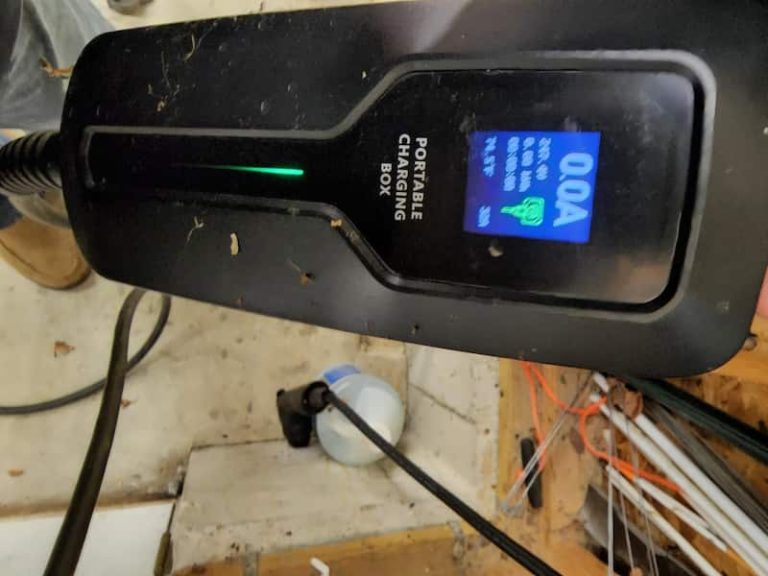You require a 6.6 kW onboard charger for a car. AC power from the car owner’s residence is converted to DC power to recharge the battery. It can frequently capture energy from the car to supply more charge when braking. You can learn about the most fundamental aspects of this charger from this article.
What Is A 6.6 kW Onboard Charger?
6.6KW EV onboard charger is a gadget that transforms the AC supply from any AC supply into usable DC form. It is intended to charge the batteries of electric vehicles. People want efficiency, sturdiness, and safety when designing it. It has a can connection interface that allows it to talk to the BMS and control the charge voltage and current.
Electric buses, hybrid cars, fully electric cars, and other new-energy vehicles require 6.6kW onboard chargers. It is suitable for charging onboard power batteries made of lead acid, lithium iron phosphate, and other materials.
It is functional within the 100 to 264 VAC-rated grid voltage range. The DC voltage output is specifically tailored for the various battery packs of customers to ensure that the charger always operates within the ideal conversion efficiency working range.
You can get about 26 range miles every hour of charging with 6.6kW, and level 3 is now more respectable. The 24kWh battery can be charged from 30% to 85% in 30 minutes.

What Are The Benefits Of a 6.6 kW Onboard Charger?
After a long ride, a 6.6kW charger will have the automobile back in usable shape in minutes. Generally, we return to 100% after around 3 hours, which significantly alters the car’s practicality.
We can have a successful expedition with the 6.6kW charger, spend some time at home at lunch, and still have a full charge for the evening. Additionally increases the utility of public L2 chargers; with the 6.6 kW charger, a full hour of charging while out to dinner or shopping is significant.
Using 6 kW charging is better for the battery, which is a bonus. The battery can operate at a lower SOC for a more extended period before charging before use. Compared to slow, early charging, the average SOC and, in most situations, the battery cycle temperature are lower.
6.6 kW Vs. 3.3 kW Onboard Charger – Which Is Better?
Different EV vehicles will feature onboard chargers of varying sizes, and therefore, the onboard charger can be 6.6 or 3.3 kW. We advise considering your habits, daily commute, and available charging choices to determine what size is appropriate.
A knowledgeable customer will only purchase a model with a 6.6 kW charger because it is necessary for some models. For instance, you would require the guarantee that you will fully charge your car by 5 pm if you have to go 50 miles to work and then recharge there using a wall box. It is not available from a 3.3 charger.
However, leave the battery sitting for hours at 98 degrees and at full charge. In that case, the advantages of rapid charging are lost. In that instance, it is less important how it took to reach 100% charged and 98 degrees because battery deterioration occurs while the battery is sitting at these levels.
6.6 kW Vs. 7.2 kW Onboard Charger – Which Is Better?
Once more, each EV owner has different wants.
One supply is 120VAC and the other 240VAC, which explains the discrepancy between the 6.6 Kw and 7.2 Kw Onboard Chargers. In general, the potential charging wattage increases with voltage.
An electric automobile may be fully charged in around 9 hours using a Level 2 7.2 kW charger. Depending on your car, the 7.2 kW charge will charge different distances and take additional time. A 7.2kW charger will typically provide a range of roughly 100 miles after a full charge.
If you want the quickest turnaround time and expect to drain the charge each day altogether, get the 7.2kw. But make sure you’re utilizing charging points that can provide at that level or above.
FAQs
Is The Difference Between A 6.6kw Versus A 7.2kw On Board Charger Just The Voltage?
The issue is not with the voltage. It is false to believe that the voltage makes a difference between 6.6kW and 7.2kW onboard chargers.
The power rating, which primarily refers to the high level of integration at a steady voltage, makes the difference. Voltage and current combine to provide power.
Onboard chargers convert incoming AC power to DC to charge the battery. Whatever the local voltage is in your location will be the incoming AC voltage. Nothing will change, no matter what kind of onboard chargers you have in your automobile.
The amount of current the automobile draws from the charging station does alter. A 6.6kW onboard charger will draw 27.5A of electricity under a 240V AC source, and a 7.2kW charger will draw 30A. That is the distinction.
What kW Charger Can I Have At Home?
Everything you require is available, excluding DC Fast Chargers. Since DC Fast Chargers are costly to operate and need specific and heavy equipment to function, they are only employed in industrial settings.
What Is The Highest kW Home Ev Charger?
The quickest charger available for a home is a 22kW charger. The charge point must be compatible with a three-phase electricity supply.
Unfortunately, it’s not that easy. Most of the time, all three obstacles keep homeowners from using a 22kW EV charge to power their electric vehicles.
Applying for upgrading to a three-phase network can cost between $3,000 and $15,000. Because a 7kW charger is a maximum capacity you can obtain on a single-phase supply, experts advise it for most customers.
Conclusion
You can charge quickly thanks to the 6.6 kW onboard charger rav4. It will take a type 2 charger 2 to 4 hours to fully charge a device, based on the size of the onboard charger. Knowing more about it can help you understand how to maintain, charge, and safeguard your vehicle.

